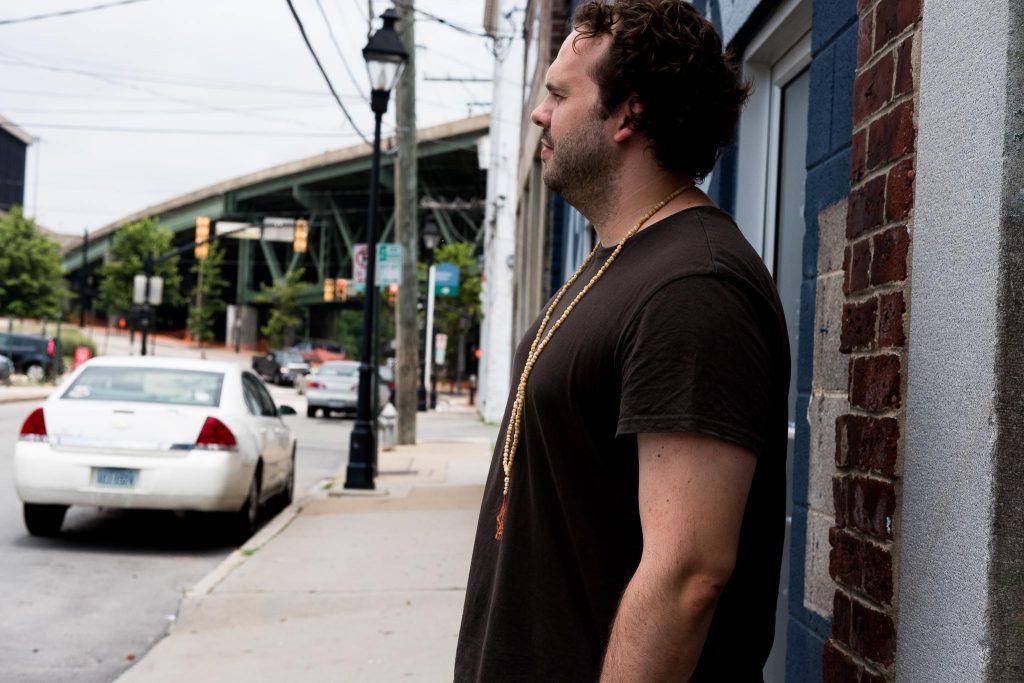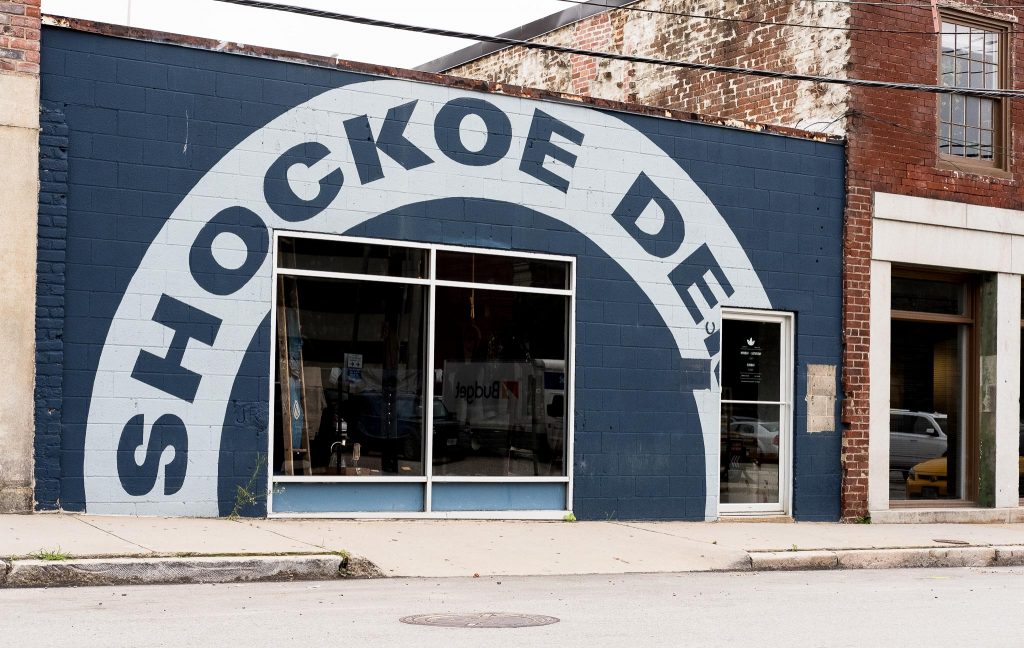
Our Brand Spotlights are where we share the stories of the people behind the brands that we carry. More than just buying a product, we want the Withered Fig experience to be deeper in purpose and meaning. We want you to know the people behind the brands that have made this their living. It is the men and women, from the top to the bottom, the owners, the designers, the cutters and sewers, that encompass everything that each brand is. As such, we hope that the stories we share will not only help you learn a little more about what makes each brand unique, but also encourages you to pursue your passions as well.
INTRO
Shockoe Atelier takes an exceptional approach towards redefining modern luxury garments. Through a blend of distinctively American aesthetics, European handcrafted spirits, and exquisite fabrics, Shockoe has carved out their own identity in the denim world. Established in 2012, Shockoe has gone through a few iterations over the last several years, from starting out with a full line of menswear, to scaling back to just denim, and now carefully re-expanding. We are excited to have them on board as part of our initial offerings as they continue to refine their identity.
We sat down with Anthony Lupesco [A], founder and designer for Shockoe Atelier, and Robert Nolley [R], who works on sales as well as on their cutting floor, at their store and factory in Richmond, Virginia to talk about their perspective on making clothes, being in a family business, and how Big Macs can be analogous to menswear.
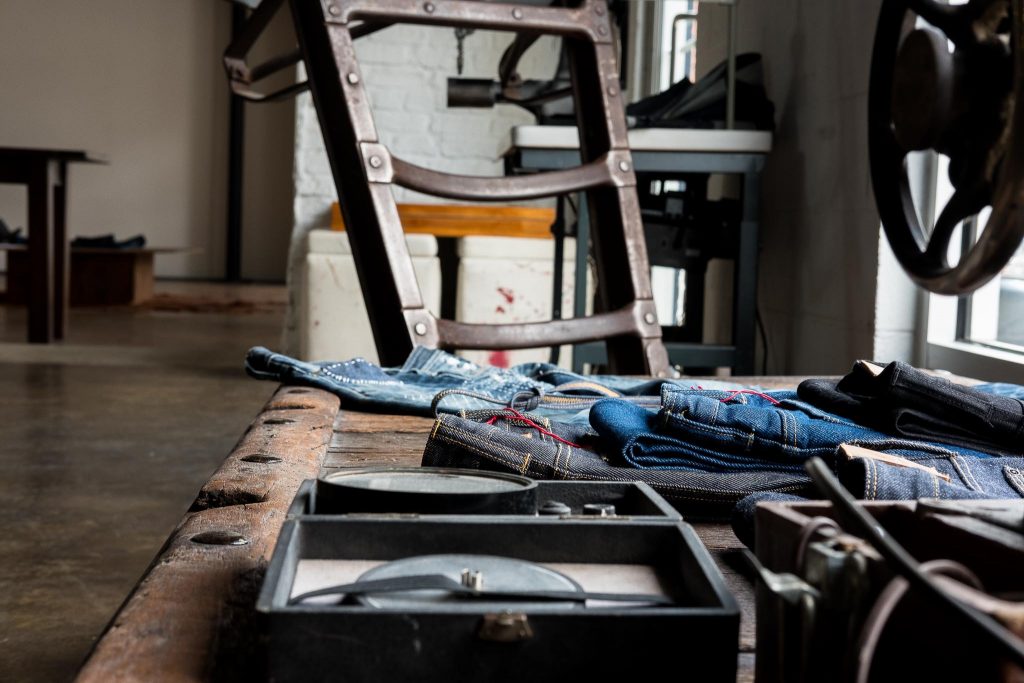
ORIGINS
Given your family’s history in the fashion industry, and seeing your parents work in the industry, did you always have the feeling that this is what you always wanted to do? How did you create your own identity for how you view menswear?
A: I moved to Richmond after school, when my parents were essentially retiring from their [sweaters and scarves designing] business in DC. While they still had contacts, I opened a high-end men’s store here in Richmond in 2007. We were catering to a different clientele at that time and still trying to figure out what we really wanted to do. At one point, I actually saw this super short documentary about collectors who went to California, dug through the mines, and found super old jeans from Levi’s. I thought, it’s pretty amazing that you can have a garment that lasts that long with natural fibers. That really got me into researching raw denim, and so I decided to make something that at the end of the day, I can touch with my hands and physically see what I had accomplished.
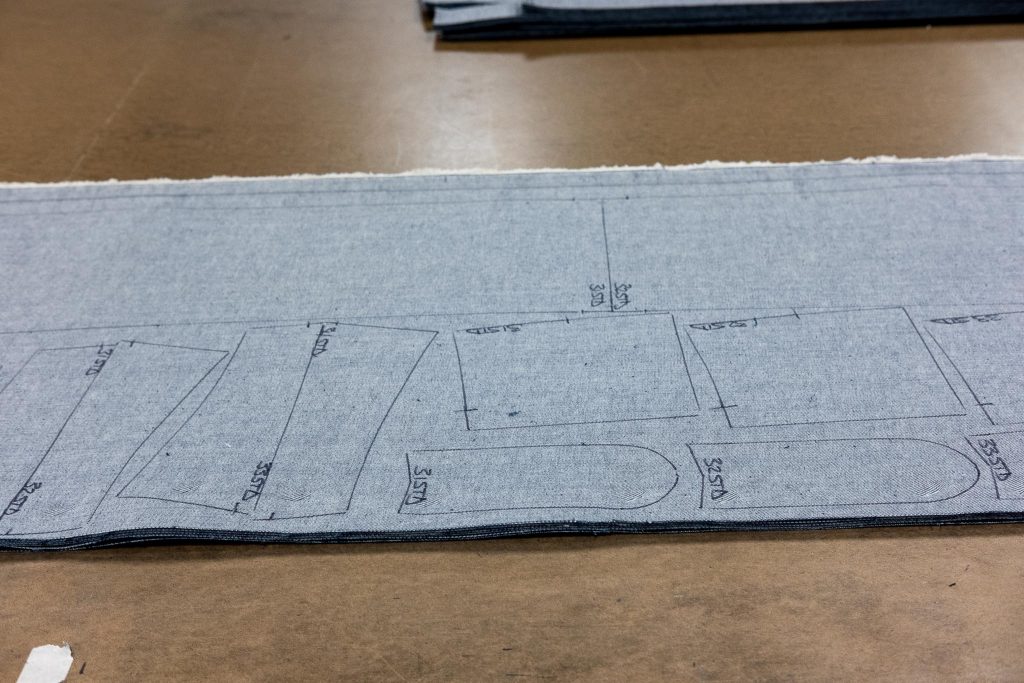
My dad taught me how to do it [start a menswear business] because I had no idea how to start a factory. I had seen it when I was little, but didn’t have much experience beyond retail. The very first thing that he told me was that, “I only know how to make real clothes.” What he meant by that is that he knows suiting and tailoring, but jeans to him is like workwear and tough stuff. So that’s what actually make our jeans different from a lot of folks. A lot of people begin by looking at vintage Levi’s and searching for inspirations such as a chain stitch or a rivet in the back pocket. We just mostly relied on my father’s experience and the products he made, so resulted in us creating a different jean from most others out there.
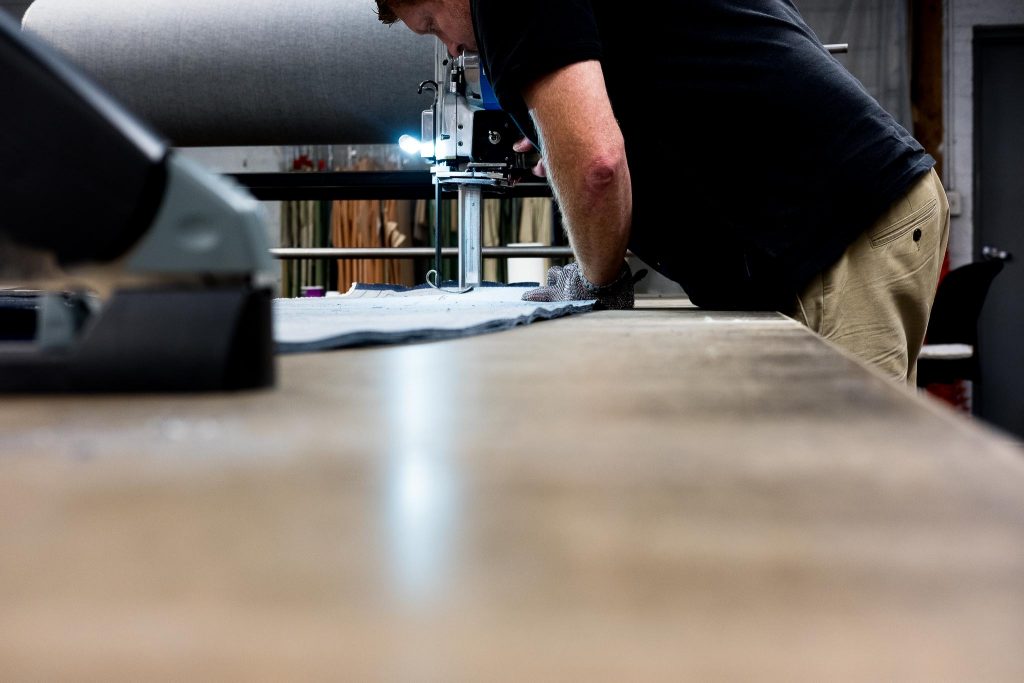
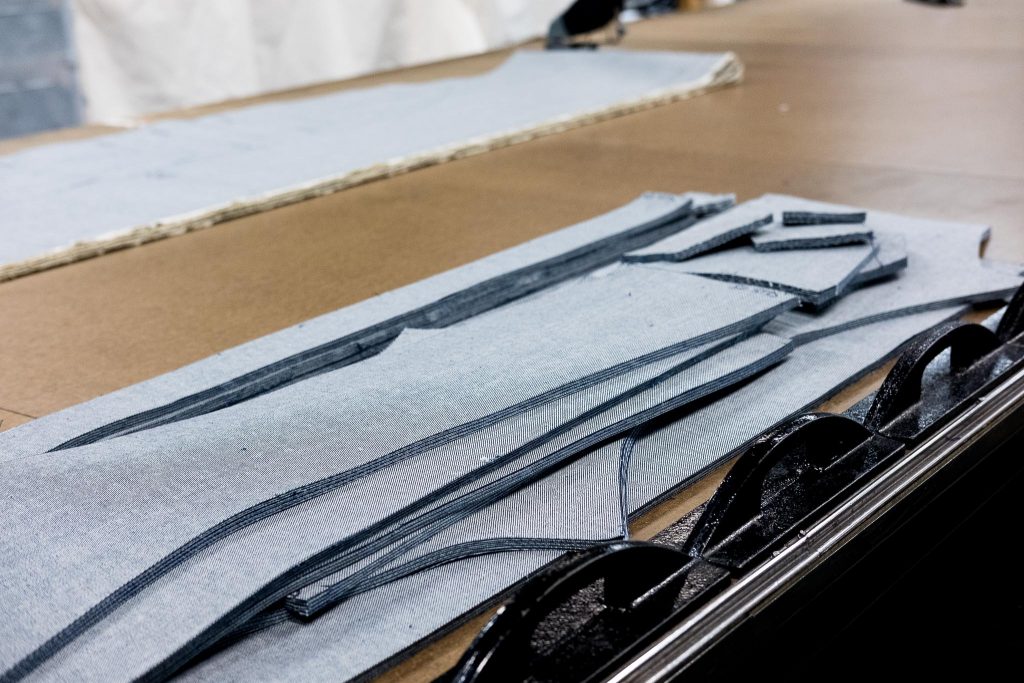
When you guys first started the Shockoe, did you actually do a lot of cutting and sewing?
A: We started out doing everything. I did a bit of cutting and sewing, but I was completely garbage at it. My dad is not a pattern maker, but his best friend is, so he worked with his friend on patterns. His friend would send stuff from Italy and we would try it out, adjust it, and send it back to him if it didn’t work. He would then send a new version, and if we liked it, my mom would then do the sewing. The first pair of jeans I have at home are pretty sweet actually, we call them “Man-ternity” jeans because of the hip. For some reason, they flare straight out at the hip. I’ve gained some weight since then, so they might actually work for me now.
IDENTITY & BRANDING
You’ve previously talked about how you see Shockoe as a “modern luxury” brand, can you define that?
A: We definitely want to extend beyond just the jeans, which we did by adding other items a couple years ago. We went with what we knew we were comfortable with at the time. I think we ended up going so far down a certain direction that we got a little too into it, and now we are starting to walk it back and marry these two worlds together. So I think it really depends on what you see luxury is. For some people it’s expensive and unattainable. For me it’s just something that’s comfortable and feels like at home. To me luxury is like soul food, something that makes you feel warm. It doesn’t have to be outrageously expensive.
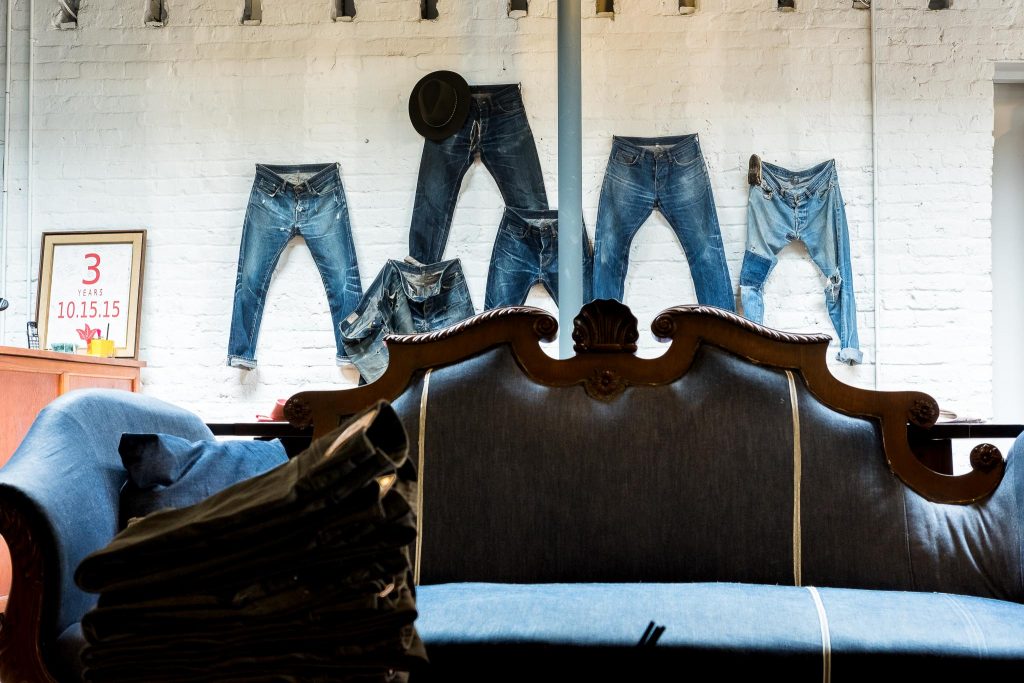
How do you maintain your origins of what Shockoe is, but also communicate with your existing and future customers at the same time?
A: I think the biggest advantage of having this retail space is that we can communicate with people directly. The retail store has really guided a lot of decisions that we make because we started out that first year only selling to Richmond. We didn’t have a web store and didn’t really do wholesale. So we started serving our local community first, and even now, we don’t want to get too far away from where their [Richmond’s] needs are.
What would say is something the public, or the denim community sometimes misunderstand about Shockoe? Or, what would you wish that people actually knew about Shockoe?
A: Sometimes we have that discussion internally because there are people that are really into heritage. I don’t want to make assumptions, but I feel like some people think we don’t pay respect to the beginnings – that we don’t value the same things. I think what we do is to look at it from the point of view that these things had a very specific purpose when they were first being created. And that purpose has changed a little bit today. The way we look at it is that we make these jeans based on the construction, as well as the aesthetic. We want them to last as long as possible so that you can get the longest life out of it and see the transformation on the jeans. We just try to highlight the fabric itself.
How do you make your customers aware of the specialties of the fabrics that you guys are using? Any hints in naming philosophy?
A: [Take Cottrell as an example.] It’s pretty sweet that we found that fabric completely by accident, about two months after we opened the store here. We originally bought it to make women’s jeans, but it ended up not having enough give for women. One time, a man came in and liked the color of the fabric and we made a custom pair for him. He showed up a few months later and they looked sick. So we started making these for men. We actually started making these before any core style, and we are just now reintroducing it because so many people were asking for it and buying multiple pairs.
Our naming thus far has been to give a geographical name, to give a nod to where the fabric is from. I wish we were better wordsmiths, and to do a better job of describing what the fabric really is.The way we look at this is that you have this balance between the best texture you can get to yield the nicer fades overtime, and the most comfortable to break in.
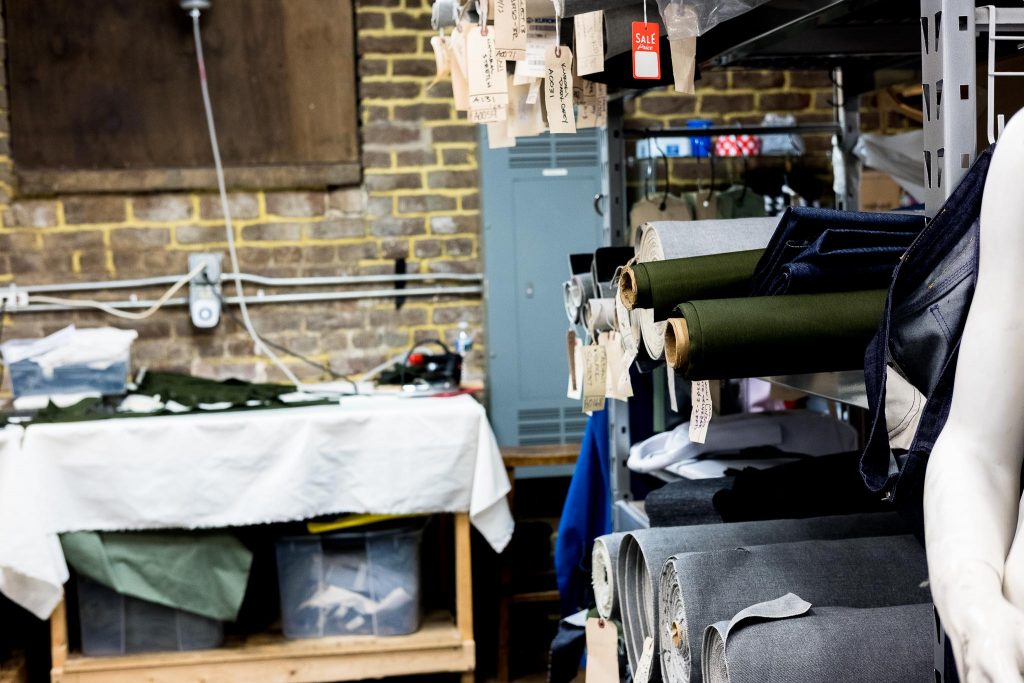
MATURATION
Shockoe has gone through a couple of iterations, moving between a full line of clothing to just denim and now bringing back some other items like shirting and jackets. How has that process been?
A: When we first started to make other products we thought it was important to try and frame what we make here – to put it in a context. We probably would do it differently moving forward. But, in the past, whenever we decided to test something, we would go full board with it and dive right into it. I think we still believe a lot of things at the core of the experiments, but some of those we didn’t execute properly. And so how would I go about them again? It’s funny because some of those items to this date, are our most searched item on the website – obviously the Slim Kojima, but also the second most being Herringbone Peacoat. We have a bunch of stuff that’s kind of in that vein. So for us it’s always been this discovery of where is that point where old world meets new world that really syncs together? I don’t know if we’ve necessary hit that yet, but that’s what we’re always trying to look for. Because that’s what denim really is as well – this old world of materials and knowledge that arrives with a new world purpose.
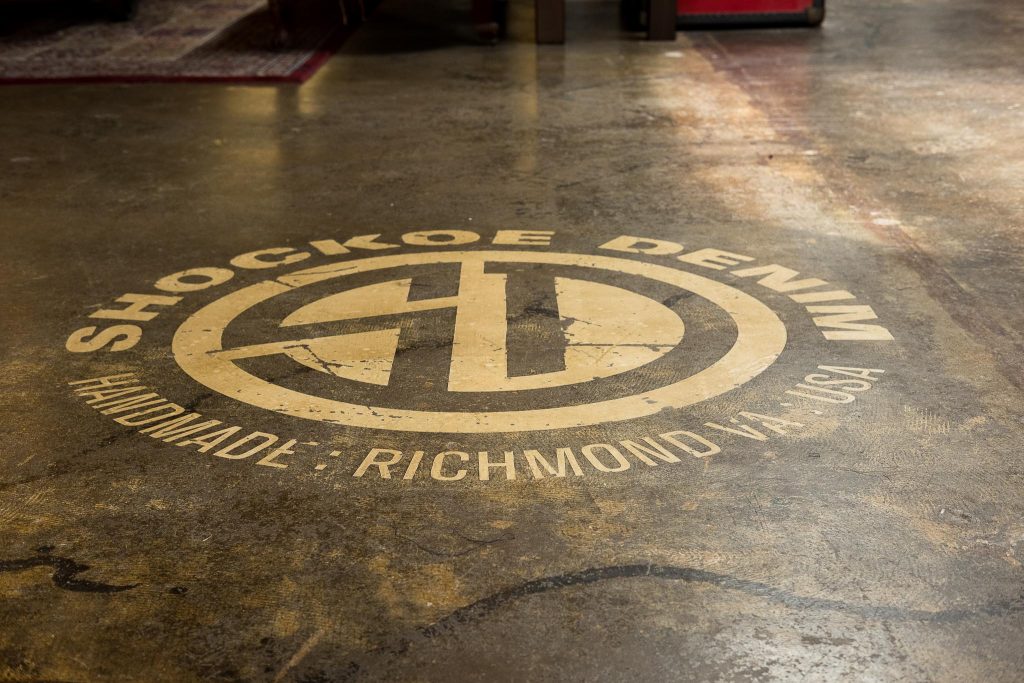
When did you guys realize that you were pushing too far in that direction you weren’t interested in going anymore?
A: The textiles are what drives a lot of our passion. We really got into these crazy fabrics right out of the gate, making pieces out of alpaca and cashmere. They felt really amazing when you put them on. But at that point, I don’t think we necessarily figured out how to really connect these two. The problem was that we had garments that were set at a price point that people were uncomfortable with, and the result was we never got to where we intended to be.
Going forward, how do you approach making changes that impact what Shockoe is as a whole, instead of going full board with a change like you have in the past?
A: Being really transparent here, we went to Italy to make these items just because we knew people there who would make these items. What that ended up doing though is that because of the distance, we were unable to be there as often as we needed to be to really make the product exactly the way we envisioned. I think now, we would try to keep it close by and find somebody who will do it for quantities that we can make – it’s a tradeoff. It’s easier for us to go to Italy and make these things, because you have a lot of small shops there with only two or three people that are making stuff. Whereas that exists a little less here, but that’s kind of coming back. But if we are close by, we can spend more time making that product. It’s really about having the control over the product that we are making.
How did you decide to do all the manufacturing in-house for your denim?
A: Starting out, being able to make them ourselves was really important to us. Manufacturing, especially in apparel, is pretty important. Obviously you can do it at a large scale, such as in Los Angeles or New York; I think when you have smaller workshops, it really does create opportunities for a lot of immigrants – whether they are immigrants from other countries or folks who come from rural areas who move into urban areas. I think we make something that everybody can be proud of, and at the same time make a decent wage doing it. It would still be much cheaper to do this in L.A. than it would be to make them back here in Richmond. For me, I think you lose a little bit of connection to your product if you make them elsewhere.
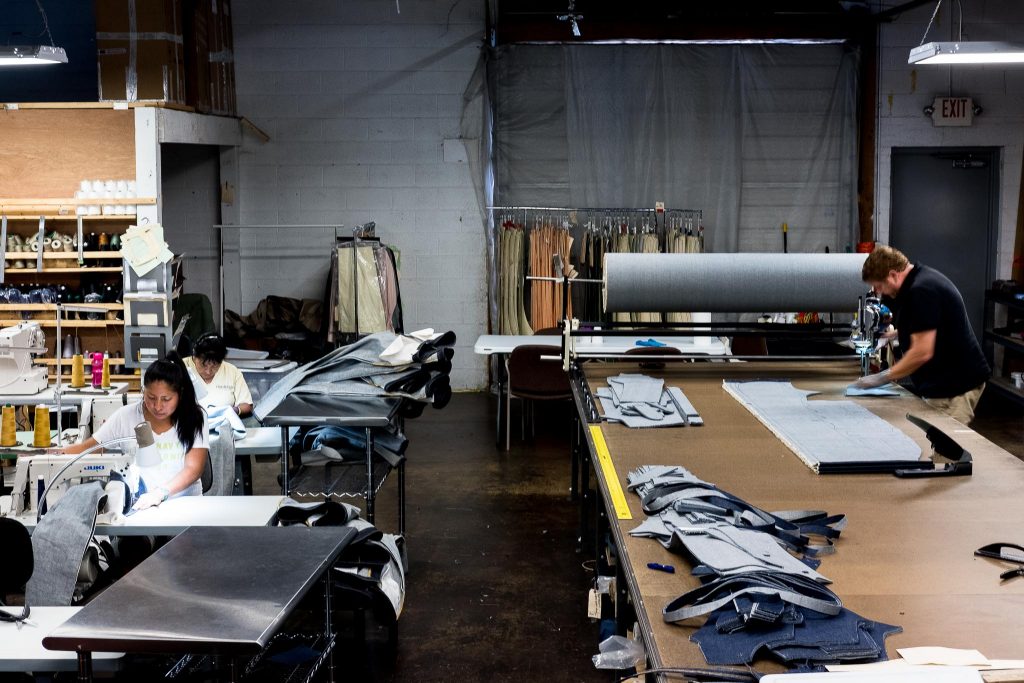
How many people do you guys employ?
A: There are a total of 10 of us. Everybody other than Robert Nolley and myself are in production. Robert N. works up front doing marketing, customer service, and operations. In the back, we have five seamstresses, Robert Banks who does the cutting, and my parents. Most of the people have been here from the beginning. Robert B. first started out by helping us out with downed machines in his free time. But when Wolf-Fording (dancewear factory) went out of business, he started working for us every day. We also have these awesome ladies, our seamstresses, who were from the same company as Robert B.
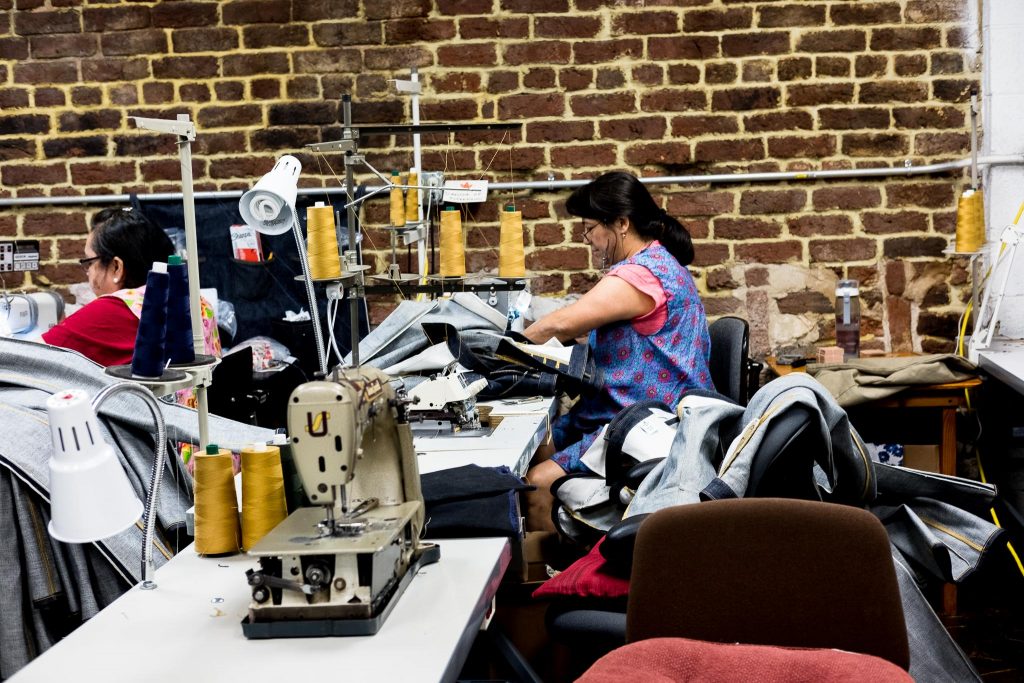
PERSONAL
Tell us about the Shockoe of the beginnings – about your mindset in taking that leap of faith, the risks, and starting a new company. How did you manage the ups and downs through these years to get where you are today.
A: I think being a family business gives you strength. When we started out in the beginning, neither my dad nor I knew how to sew. Two months after we opened, my mom was diagnosed with cancer – she had surgery and things didn’t go well. She ended up being in a hospital for a long time. So the first few months were just my dad and I trying to figure things out. We talked to some people about how to make the jeans the way we wanted them to. And we would leave here and go to St. Jude to see my mom. I think that gave us some resolve right out of the gate.
Also, Richmond has been super supportive throughout everything Shockoe has done. From when we were saying – we’re jean makers, but let’s make a $2,000 coat and see how that goes; to other things like not having the right amount of inventory, Richmond has been great. Being a family business, it feels like all of us are in the family. If you don’t feel really good a certain day, or if you are bummed out, you can just go back there [to the production floor] – those ladies are always laughing and are good sources of inspiration.
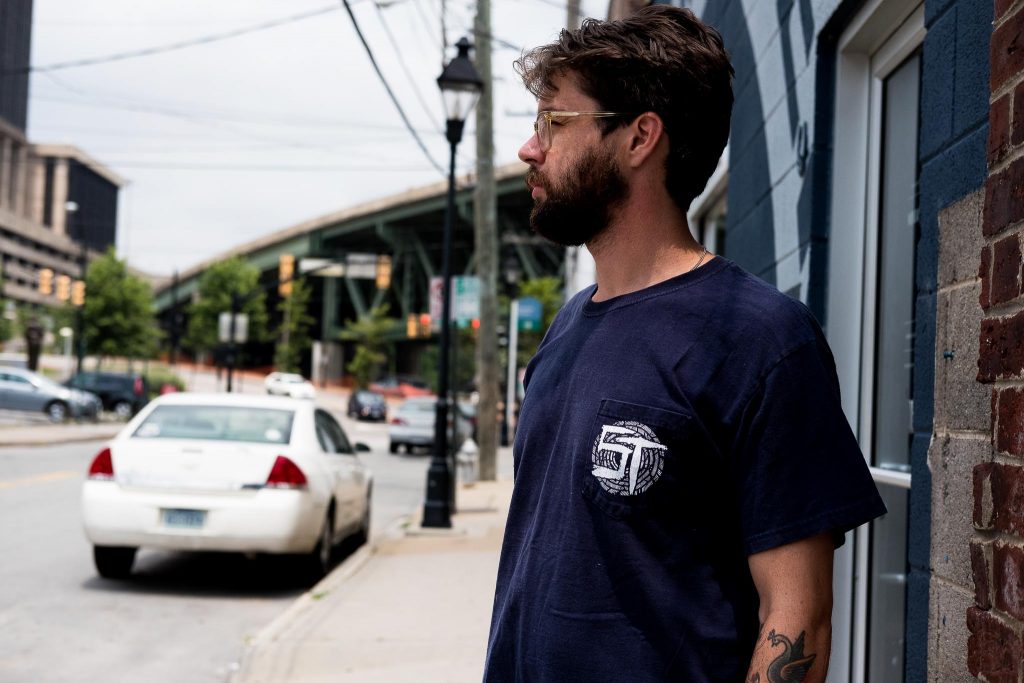
How is it working in a family business?
A: It’s great, but it’s also really tough because on some level everything is really personal. At the same time, there’s also complete trust. It’s a question that’s hard for me to answer, something Robert can better answer honestly. Even though I’m 32 now, my mom will still come into the office and tell me that my office and desk is a mess. I’ll be walking by and she’ll tell me the trash needs to be taken out, or ask me why all these cups are dirty. I suppose it helps keep me in check.
R: It’s a fun thing. Totally not a traditional working environment, in the best of ways in our case. I think being a family run business makes everyone care a little bit more and have more pressure to get your job done and not let anyone down. It also gives you a little more confidence to try some maybe “out of the box” ideas and not catch flack for it if they do not work. There are, of course, moments where things are more emotional and tense because of everyone’s close relationships, but it all comes from a place of love. Family run businesses are always going to be a bit more wacky in the daily operations, but that is because people’s personalities and emotions are taken into account more so than in a normal business scenario where you are just supposed to do your part and clock out. We are a small team trekking through a stressful business and making it work, feeling like part of the family adds a huge confidence boost in knowing people are there for you – whether it’s to pick up your slack or really knuckle down when things get crazy. It’s knowing that whatever happens, we will get it done.
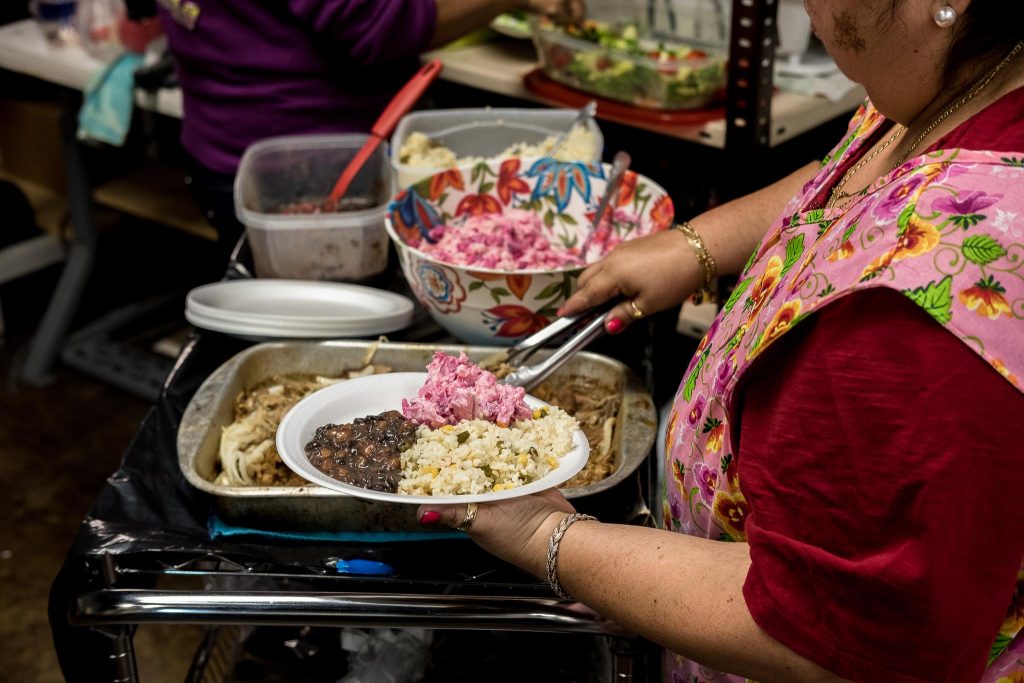
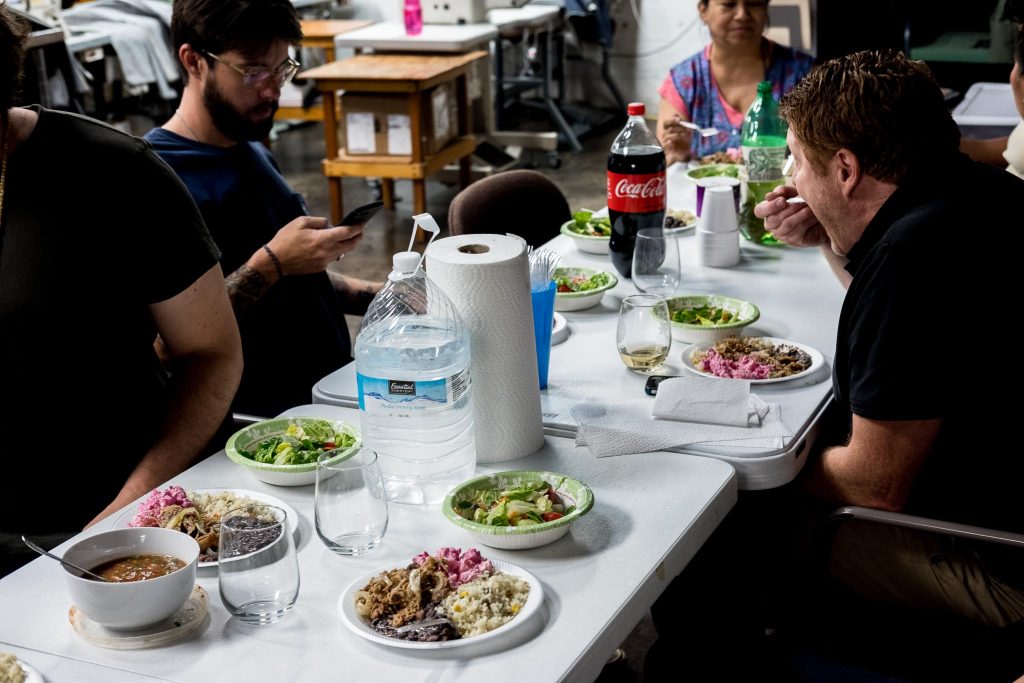
How did traveling between several European countries when you were young shape your design and inspiration of the clothing?
A: Italy was probably the most relevant to me when I was abroad. A lot of things are happening when you are 12 or 13 years old. I think what was really cool is that we lived in a super small town, 45 minutes outside of Milan and there was not much going on there. But there was this pastry shop, and people would travel from Austria to come and get these pastries. What I love about Italy is this artisanal spirit. You have some dude sitting there, who may not know how to read or write, but he’s convinced that he’s the best sculptor in the world. That kind of artisanal spirit was something that really impressed me. I think that is also at the root of this entire movement that has been happening in menswear. There’s this thought that, “I’m just so tired of you trying to constantly sell me stuff that I don’t need. Just give me one really good product that I can wear for a long time.” That’s what I want for us, and I think other people want that too. I don’t want 20 Big Macs, I just want one really good burger.
COMMUNITY
How have you seen Richmond evolve over the years? Where do you see Richmond as a city going?
A: I think this city is really cool even though I’m not sure how this all really happened. There’s this place called Sub Rosa Bakery that was nominated for a James Beard award, and there’s a lot of good food, breweries, and all that. It’s got this really long history in punk rock, and I think that’s starting to really come to the surface in the last few years. Those guys are becoming a little bit older, and coming up with businesses, and I think that scene has really driven the culture in this town.
There’s a lot of soul and character in Richmond, which is something that really appealed to me coming from D.C. In D.C., you can have food from pretty much any country you want. It’s really diverse, but sometimes you ask yourself, where’s the depth? Like, Ben’s Chili Bowl can’t be the only thing.
How does Shockoe get involved in the community here in Richmond?
A: We’ve done some things with VCU’s School of Fashion Design and the Ad and Business program at local schools. We also just picked up this additional space in the front of our store and thought, what if we use that as a gallery for friends of ours who don’t really show their stuff in a traditional way. Broad Street and Main Street are really where all the art galleries are, but we wanted to do something a little off the beaten path that doesn’t have to be a part of that. We also try and find ways to work with young businesses that can contribute to the culture of this city.
We’ve done some pop-ups on Broad Street with other companies. As well, there’s a craft show that happens in Richmond once a year – it’s one of the most storied craft shows in the entire country. Although we were initially hesitant – because it’s a craft show – we did it last year with a bunch of small makers and just showing what we do. I was sort of surprised. I thought it would be like the Renaissance Fair, but it definitely was more modern and a really cool event.
For people who might want to come visit Shockoe, what would you also recommend checking out in Richmond while they are down here?
A: The Veil Brewing and Ardent Craft Ales are awesome. Ardent has a great outdoor place, and the Veil has great beer. Sub Rosa Bakery for pastries and bread; Rappahannock is awesome for seafood; and Church Hill is a great area to check out as a neighborhood. I always tell people to go to the Virginia Museum of Fine Arts. You don’t necessarily think of coming to Richmond to see a museum, but it’s pretty sweet and has a good collection.
If you’re staying in Richmond with an AirBnB, JM Stock Provisions is a butcher shop that is really awesome. We do a cookout with them every year in the back parking lot behind Shockoe. That will happen probably in September. We did it in past years in August, but it was just too hot for that. There are some other things that we’d like to do that are still in works, but we’ll let everyone know when things get finalized.
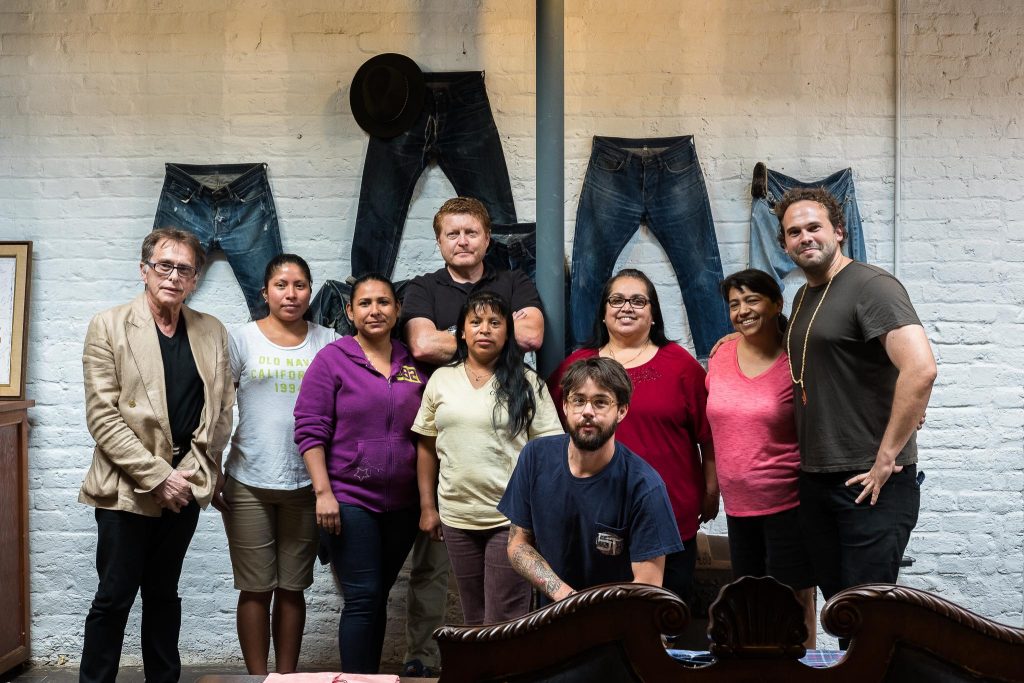
You can find our latest Shockoe Atelier offerings over on the Withered Fig store. All Shockoe Aterlier denim comes with free lifetime repairs from Shockoe’s factory in Richmond, VA.

